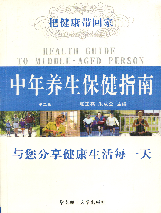
并列正书名: Health Guide to Middle-Aged Person
主要责任者: 张玉亮,朱成全;向仕平,钟先阳,肖烈钢等
责任方式: 主编;副主编
出版者: 华南理工大学出版社
出版地: 广州
字数: 279 千字
页码: 1-246
开本: 16
中图分类号: R161
装帧: 简
语种:中
定价:33.00
出版时间:2006-11
丛书多卷书否:是
书目简介:本册工具书共收录283条词条。
| 词条 | 中年养生保健指南 |
| 类别 | 中文百科知识 |
| 释义 |  并列正书名: Health Guide to Middle-Aged Person 主要责任者: 张玉亮,朱成全;向仕平,钟先阳,肖烈钢等 责任方式: 主编;副主编 出版者: 华南理工大学出版社 出版地: 广州 字数: 279 千字 页码: 1-246 开本: 16 中图分类号: R161 装帧: 简 语种:中 定价:33.00 出版时间:2006-11 丛书多卷书否:是 书目简介:本册工具书共收录283条词条。 |
| 随便看 |
开放百科全书收录579518条英语、德语、日语等多语种百科知识,基本涵盖了大多数领域的百科知识,是一部内容自由、开放的电子版国际百科全书。